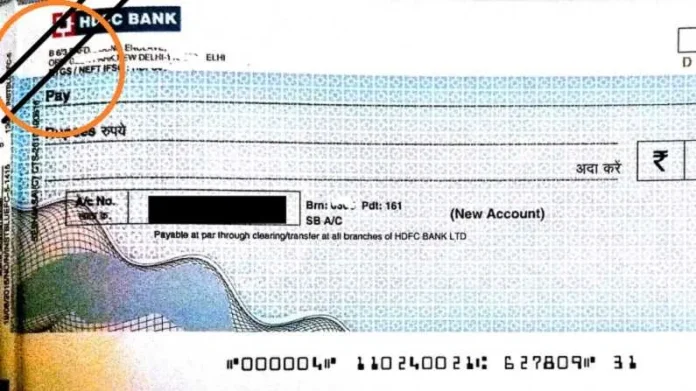Almost everyone does banking, but very few people use cheques. There are many people among them who do not know about different types of cheques. One such cheque is Cross Cheque, under which two parallel lines are drawn on the top left corner of the cheque. Do you know why these lines are drawn? Let us know every detail of cross cheque according to the Negotiable Instruments Act 1881.
No one can withdraw cash from this
According to Section 123 of the Negotiable Instruments Act 1881, the person issuing the cheque informs the bank through two lines drawn on the left-hand corner of the cheque that it is a crossed cheque. The special thing about this cheque is that you cannot go to any bank and withdraw cash from it.
Payment is made only in the account
Crossing a cheque ensures that payment will be made into the bank account only. This payment can be made to the person whose name is written on the cheque. Or that person can also endorse the cheque to someone, for which it becomes necessary for him to sign on the back of the cheque.
General crossing
There are many types of cross cheques. The first is general crossing, in which two lines are drawn on the edge of the cheque. Whatever we have talked about till now about cross cheque comes under general crossing only.
Special crossing?
According to Section 124 of the Negotiable Instruments Act 1881, special crossing is done when the issuer of the cheque wants the cheque to go into the account of a particular bank of the person to whom the money is to be paid. Suppose the person to whom money is to be given has accounts in many banks. In such a situation, the person issuing the cheque can write the name of the bank by drawing two parallel lines in the empty space at the bottom of the cheque. In such a situation, money can be deposited through that cheque only in the account of that bank, whose name will be written on the cheque.
Account payee crossing
If Account Payee (A/C Payee) is written between the crossing lines in the cheque, it means that only the person whose name is written on the cheque can withdraw money from it. He can withdraw money by depositing a cheque in any bank account. However, if the name of any bank has been written while doing special crossing, then the money will go to that bank only. The most important thing about this cheque is that it cannot be endorsed by anyone. Its money will go to the account of only that person whose name is written on the cheque. Let us tell you that there is no mention about this in the Negotiable Instruments Act 1881, but many banks follow this practice. This is also mentioned on the website of HDFC Bank.
Why are crossed cheques issued?
The purpose of issuing a crossed cheque is only that the amount of the cheque should be given to the person to whom the person issuing the cheque wants to give it. In such a situation, even if the cheque falls into wrong hands, he will not be able to withdraw money from it. That is, crossing the cheque increases its security.
Also Read-
- House Rent Allowance: How to claim HRA without living on rent, know details
- Central Bank Of India Recruitment 2024: Opportunity to get job in Central Bank without examination, few days left to apply, salary is good
- HDFC Bank Senior Citizens Care FD: Best interest available for senior citizens here, check details


